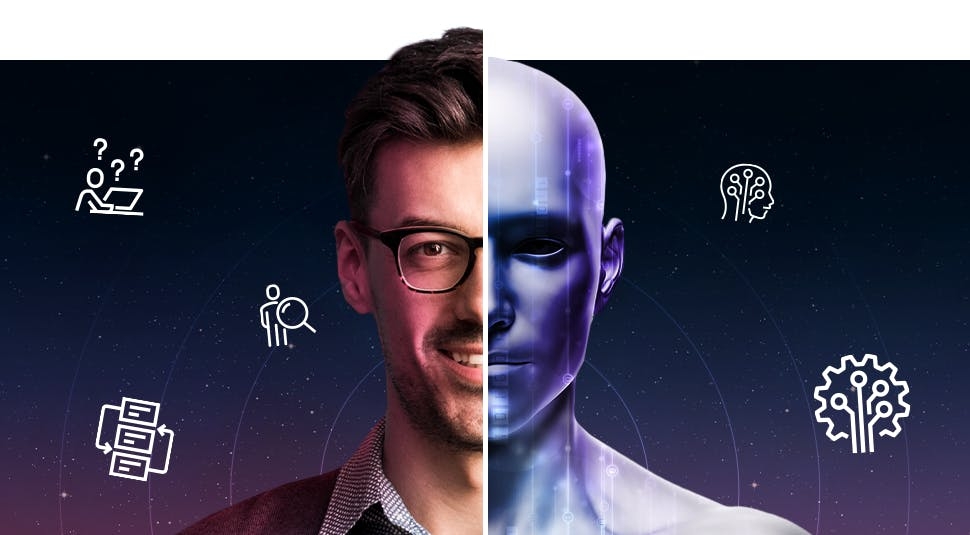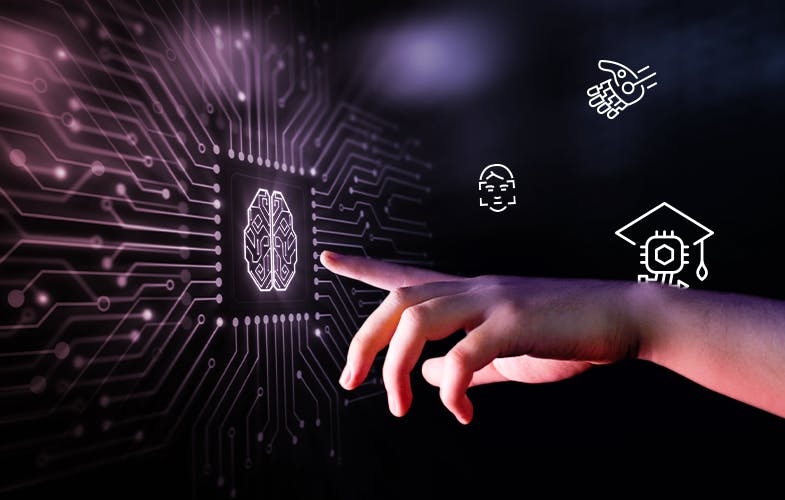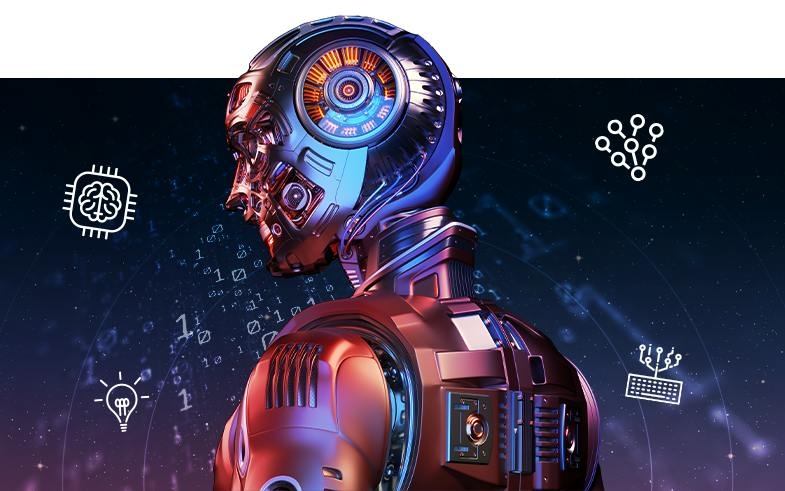Reduced cost of automated UI and UX design

Ever since the web started evolving, ideas for businesses started to pop, and startups were created one after another. Online businesses required relatively low cost to start, even lower if you decided to do something on your own.
The majority of us, use the internet daily to perform various tasks, from shopping for groceries to booking holidays. We browse through hundreds of websites, and we usually don't think much of it. When we start to think about designing a website for our own product or service, it doesn't seem like much of a task. Once we start to research the issue, however, the number of information can get overwhelming with many aspects to consider starting from psychology, visual perception to technology, and regulations. Every tool has its constraints and there are certain rules to be for example WCAG compliant. It's no surprise that a lot of the interface design is not creative, since there is a set of best practices to follow.
Because there are rules you can go along with and it is repetitive, it can be programmed and automated. That's where the technology comes into play, and on the web, you can find a vast amount of pre-made solutions to help you get started like templates, editors or AI applications.
Artificial Design Intelligence
ADI is an artificial intelligence that uses machine learning to identify trends and implement them, creating a full design on its own. It can be used for logos, graphics and even full websites. User states what he wants and system auto-generates a personalized design. In the game No Man's Sky this technology was used to create nearly all of the elements including planets, plants, animals, structures and spacecrafts. Some examples from the design world include:
Looka.com is an application that uses ADI to design logos. You enter company name, select industry, color, few logos you like, and bam! you have many to choose from. All personalized for your business.
Wix ADI does the same, you go through the wizard, selecting features you need, and your visual preferences to have a website in just few clicks. It's very easy to use, it supports most type of websites like online stores, blogs, portfolios and you can customize it, adding extra pages and applications like live chat.
Jimbo Dolphin is another example, it's even faster than Wix with creating a website in less than 3 minutes, it can also pull up photos and business description from your social media
The programs are taught to observe existing websites and understand design principles. Thats how they come up with the designs, that might be not really original, but theoretically customized and extremely easy to get.

One thing that AI is definitely good at, is processing a huge amount of data. It can track user engagement, and even based on that predict it for the future. With tracking basic information about the user that enters the website it can also personalize the page even further. Depending on the age, location, tech exposure and gender users can be attracted to different images and texts. The AI can present sites differently to different users. Persado for example, specializes in personalized messaging to speak to specific customer segments for higher engagement on the site. In other words, it analyzes language you use on your website, builts unique language model based on the tone of your brand and generates language variations to fit different users. Surprised? It's actually nothing new, there is a lot of tools that learn how you behave on a daily basis. CrystalKnows is application for team leaders or for hiring managers to explore personalities and gain insight on how to communicate with a specific person whether it's a candidate or a coworker. One of the tools they offer is Chrome Extension that you can use on any Linkedin profile, it reviews the activity and presents you suggestions on what type of messaging this person will more likely respond to.
Anticipatory design have been around for some time - many components on the websites are triggered based on your past behaviours or bookings. It's all based on reduction the cognitive load, so the users can focus on the main action they want to perform, rather than all of the elements around it. Online grocery shop suggests re-purchasing last order, and booking app suggests attractions around your hotel. Youtube and Netflix use algorithms to determine which thumbnail you are more likely to click on and ads you are seeing are related to your Google searches.

Automation for Designers
Should designers worry that they will be soon replaced by robots?
Currently, no.
As I mentioned earlier, the current AI tools are collecting data and then following certain patterns to produce a fast result. The effect is not much better than a template, as it lacks novelty, originality, and overall human touch. It's good for starters, but to do any major updates or changes you have to speak to a Developer, and to a design memorable brand you are better off speaking with a UI/UX Designer.

Nevertheless, the potential of technology gives us the opportunity to grow, and it can cover some of the tedious chores to give Designers free time for more creative and interesting things they do best. As Yury Vetrov, Design Director at Mail.Ru, put it "Designers would become art directors to their new apprentices, computers."
We have more and more tools, to cover certain areas, making the designers work faster and be more productive. Airbnb for example is working on a tool to turn hand-drawn wireframe sketches directly to production-ready code. It generates the prototype using predefined components from their library. Sketch2Code from Microsoft works similiarly recognizing hand-drawn design elements like a button, extracting hand-written text and combining it to generate HTML snippet of different elements.
Design tools like Figma have components to unify certain elements and make the changes happen immediately across the whole project, they also recently added Auto-Layout feature that allows those components to be responsive, so the changes are made even faster with elements scaling automatically. Basic prototypes can be produced in few clicks and with use of plugins we can automatically perform actions like cleaning up the file, changing names and inserting photos.
There are also AI-driven user-testing tools available, like Odaptos or Vempathy that recognize tester's emotions using Artificial Intelligence facial recognition algorithms.
Tools like Morphio can automate work of agencies to perform Budget Audits, Ad Placement Auditing, also Segment your audience and based on that leave you suggestions and alert you to risks.
Automation is all around us and is constantly changing the way we work. Embrace the change.
Sign up to Our Insights Newsletter
We will send you an e-mail whenever we upload new article. Be the first one to get the news about latest design and tech trends.
I agree to receive marketing and/or commercial information from Qodeca Sp. z o.o. with registered seat in Warsaw via electronic means to the E-mail address indicated by me. I acknowledge that my consent may be withdrawn at any time. I confirm that I have read Privacy Policy.
Detailed information regarding the scope, manners, purposes, and legal grounds for the processing of your personal data as well as rights to which the data subjects are entitled are provided in the Privacy Policy of our website. We encourage you to familiarise yourself with these contents.
You can unsubscribe from our newsletter at any time.
We respect your privacy. Your e-mail address will only be used to send our newsletter.
